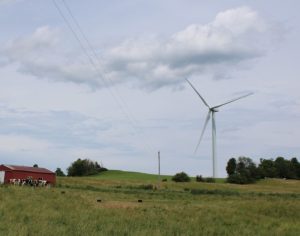The New York State Department of Agriculture and Markets recently announced $25.8 million in funding for the New York Food for New York Families Program. The money, which come from the U.S. Department of Agriculture (USDA), not only provides a boost to New York’s farmers, but also increases communities’ access to local foods and will […]
Get Instant Access to This Article
Become a Central New York Business Journal subscriber and get immediate access to all of our subscriber-only content and much more.
- Critical Central New York business news and analysis updated daily.
- Immediate access to all subscriber-only content on our website.
- Get a year's worth of the Print Edition of The Central New York Business Journal.
- Special Feature Publications such as the Book of Lists and Revitalize Greater Binghamton, Mohawk Valley, and Syracuse Magazines
Click here to purchase a paywall bypass link for this article.
The New York State Department of Agriculture and Markets recently announced $25.8 million in funding for the New York Food for New York Families Program. The money, which come from the U.S. Department of Agriculture (USDA), not only provides a boost to New York’s farmers, but also increases communities’ access to local foods and will help increase the resiliency of New York’s food system.
“It’s created new opportunity for farmers in upstate New York,” says Myron Thurston III, food-supply chain marketing specialist with Cornell Cooperative Extension of Oneida County. “If a farmer is interested, they can absolutely reach out to their local food bank and see if they need any New York goods.”
Food banks that receive grants through the program must spend 67 percent on New York food products. Grants through that track range between $200,000 and $2 million.
A second grant track provides grants between $10,000 and $50,000 to organizations working within the food system to help producers access new markets, fill gaps in the supply and distribution chain, or increase access to local food in underserved communities.
Applications for both grant tracks are due Jan. 18 and are available online at agriculture.ny.gov/funding-opportunities under the New York Food for New York Families program.
The goal of the new program is to establish and broaden partnerships between New York farmers, the food-distribution community, and local food networks to bring fresh New York foods to rural, remote, and/or underserved areas while supporting local and traditionally disadvantaged farmers and producers. It will expand and create marketing and economic opportunities for those farmers.
Eligible grant applicants include not-for-profit organizations, agricultural cooperatives, tribal organizations, public educational institutions, and local or municipal governments.
The funding comes at a much-needed time when inflation is really taking a toll on people’s wallets at the grocery store, Thurston says. Inflation has that same negative effect on food banks, which are burning through their funding faster than normal due to higher prices and increased need, he adds.
There are approximately 600 farms in Oneida County, according to Thurston. Statewide, there are about 33,000 family farms in the state and nearly 7 million acres of farmland.
New York’s food products include dairy, apples, sweet corn, other fruits and vegetables, and maple syrup.
Other state programs that support New York foods include the state’s Farm-to-School program and the Nourish NY program, which has purchased nearly $100 million worth of food from local farmers and delivered it families in need.




